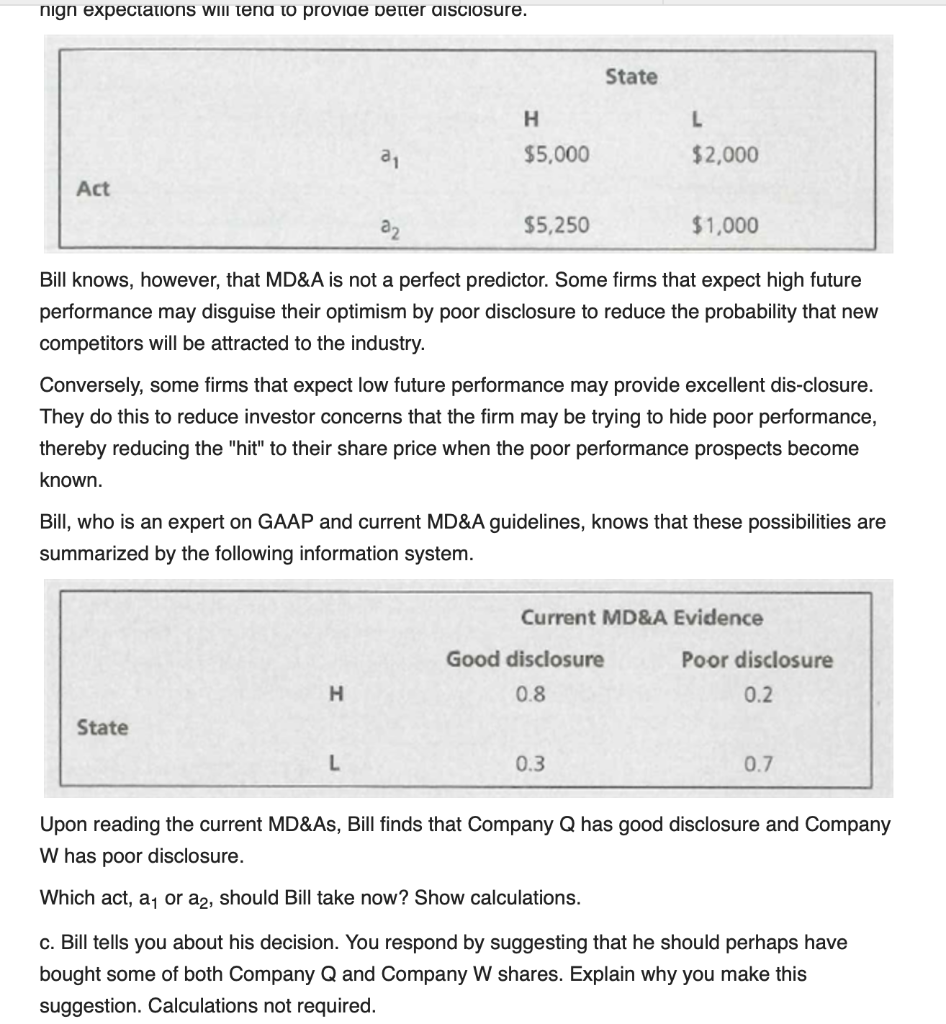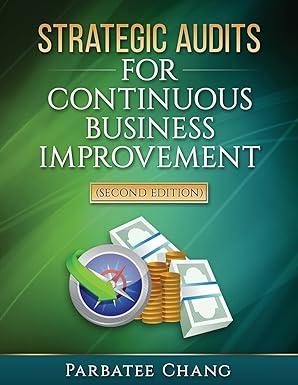

Bill plans to invest $50,000 in the shares of Company Q (act ay) or the same amount in shares of Company W (act az) for 1 year. Bill, who is a rational investor, identifies two states of nature: State H: The company expects high future cash flows. State L: The company expects low future cash flows. Or the basis of his information to date about each firm, Bill assesses the following subjective prior state probabilities (i.e., the same probabilities for each company): State H: 0.8 State L: 0.2 The following is the payoff table for these two investments. Payoffs are net of (i.e., they exclude) the original investment. Bill is risk averse, with utility equal to the square root of the amount of net payoff received. Required a. On the basis of his prior probabilities, which act should Bill take? Show calculations. b. Instead of acting now, Bill decides to obtain more information by careful reading of each company's Management Discussion and Analysis (MD&A), from their latest annual reports. He plans to focus on their discussions of risks and uncertainties, in conjunction with their discussions of future prospects. He knows that careful evaluation of the quality of these discussions will provide inside evidence of the companies' future cash flow expectations. That is, companies with high expectations will tend to provide better disclosure. nign expectations wili tena to provide better disclosure. State H L a1 $5,000 $2,000 Act a2 $5,250 $1,000 Bill knows, however, that MD&A is not a perfect predictor. Some firms that expect high future performance may disguise their optimism by poor disclosure to reduce the probability that new competitors will be attracted to the industry. Conversely, some firms that expect low future performance may provide excellent dis-closure. They do this to reduce investor concerns that the firm may be trying to hide poor performance, thereby reducing the "hit" to their share price when the poor performance prospects become known. Bill, who is an expert on GAAP and current MD&A guidelines, knows that these possibilities are summarized by the following information system. Current MD&A Evidence Poor disclosure Good disclosure 0.8 H 0.2 State L 0.3 0.7 Upon reading the current MD&As, Bill finds that Company Q has good disclosure and Company W has poor disclosure. Which act, ay or a2, should Bill take now? Show calculations. c. Bill tells you about his decision. You respond by suggesting that he should perhaps have bought some of both Company Q and Company W shares. Explain why you make this suggestion. Calculations not required








